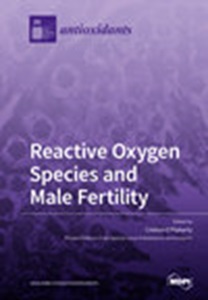取代氧化锌的嚼草果提取物可增强断奶仔猪的抗氧化和抗炎能力,提高生长性能,促进肠道健康
IF 6
2区 医学
Q1 BIOCHEMISTRY & MOLECULAR BIOLOGY
引用次数: 0
摘要
本研究旨在评估用茄子提取物(TCE)替代氧化锌对断奶猪生长性能、抗氧化能力、免疫功能和肠道健康的影响。最初,将 72 头断奶的杜洛克×兰德拉克×大白猪(28 日龄,初始体重为 7.43 ± 0.14 千克)按性别平均分成三组,每组六个重复,每个重复四头仔猪。它们分别饲喂基础日粮(CON 组)、每公斤含 2 克氧化锌的日粮(ZnO 组)或每公斤含 2 克 TCE 的日粮(TCE 组),为期 28 天。随后,为了进一步确认三氯乙烷在仔猪中的最合适水平,将 96 头相同品种和年龄的仔猪(初始体重为 7.42 ± 0.12 千克)按性别随机分为四组,每组六个重复,每个重复四头仔猪,分别饲喂基础日粮(CON 组)或添加 1 克/千克三氯乙烷的日粮(LTCE 组)、添加 2 克/千克三氯乙烷的日粮(MTCE 组)或添加 4 克/千克三氯乙烷的日粮(HTCE 组),持续 28 天。结果表明,与对照组相比,TCE 和氧化锌都降低了腹泻率(p = 0.001),提高了平均日增重(ADG)(p = 0.014)。1 克/千克和 4 克/千克的三氯乙烷可降低料增比(p = 0.050)。日粮中添加三氯乙烯和氧化锌可提高血清总抗氧化能力(T-AOC)(p = 0.020)。不同剂量的 TCE 还能提高空肠 IgA(p = 0.000)水平和 IL-10 表达(p = 0.004),降低血清(p = 0.043)和空肠粘膜(p = 0.000)中 TNF-α 的水平。值得注意的是,TCE降低了十二指肠的隐窝深度(CD)(p = 0.007),增加了回肠的绒毛高度(VH)(p = 0.045),随着剂量的增加,十二指肠(p = 0.000)和空肠(p = 0.001)的绒毛高度与隐窝深度比(VH:CD)也有所上升。与 CON 猪相比,饲喂 ZnO 和 TCE 的猪的盲肠内容物中乳酸菌属(p = 0.000)含量更高,链球菌属(p = 0.000)和头孢链球菌属(p = 0.035)含量更低。因此,TCE 首先被认为能够替代氧化锌,改善肠道形态,增强抗氧化和免疫功能,从而保障肠道粘膜健康,促进仔猪生长。本文章由计算机程序翻译,如有差异,请以英文原文为准。
Terminalia Chebula Extract Replacing Zinc Oxide Enhances Antioxidant and Anti-Inflammatory Capabilities, Improves Growth Performance, and Promotes Intestinal Health in Weaned Piglets
This study aimed to assess the effects of substituting zinc oxide with terminalia chebula extract (TCE) on growth performance, antioxidant capacity, immune function, and intestinal health in weaned pigs. Initially, 72 weaned Duroc × Landrace × Large White piglets, 28 days old with an initial weight of 7.43 ± 0.14 kg, equally divided by gender, were randomly assigned into three groups, with six replicates and four piglets per replicate. They were fed a basal diet (CON group), a diet containing 2 g/kg zinc oxide (ZnO group), or 2 g/kg TCE (TCE group) for a duration of 28 days. Subsequently, to further confirm the most appropriate levels of TCE in piglets, 96 piglets of the same breeds and age, with an initial weight of 7.42 ± 0.12 kg, also equally divided by gender, were randomly assigned into four groups, each with six replicates and four piglets per replicate, and fed a basal diet (CON group), or diets supplemented with 1 g/kg TCE (LTCE group), 2 g/kg TCE (MTCE group), or 4 g/kg TCE (HTCE group) for a duration of 28 days. The results demonstrated that both TCE and ZnO reduced diarrhea rates (p = 0.001) and enhanced average daily gain (ADG) (p = 0.014) compared to the control group. TCE at 1 g/kg and 4 g/kg reduced the feed to gain ratio (p = 0.050). Dietary supplementing with TCE and ZnO increased serum total antioxidant capacity (T-AOC) (p = 0.020). Various doses of TCE also increased jejunal IgA (p = 0.000) levels and IL-10 expression (p = 0.004), and decreased the levels of TNF-α in both serum (p = 0.043) and jejunal mucosa (p = 0.000). Notably, TCE reduced the crypt depth (CD) of the duodenal (p = 0.007) and increased the villus height (VH) of the ileal (p = 0.045), and with increased dosage, there was a rise in the villus height to crypt depth ratio (VH:CD) in the duodenum (p = 0.000) and jejunum (p = 0.001). Higher abundances of Lactobacillaceae (p = 0.000) and lower levels of Streptococcaceae (p = 0.000) and Peptostreptococcaceae (p = 0.035) in cecal contents were fed the ZnO and TCE pigs compared with CON pigs. Therefore, TCE was firstly presented as being able to replace zinc oxide, improve intestinal morphology, and enhance antioxidant and immune functions, thus safeguarding intestinal mucosal health and promoting piglet growth.
求助全文
通过发布文献求助,成功后即可免费获取论文全文。
去求助
来源期刊

Antioxidants
Biochemistry, Genetics and Molecular Biology-Physiology
CiteScore
10.60
自引率
11.40%
发文量
2123
审稿时长
16.3 days
期刊介绍:
Antioxidants (ISSN 2076-3921), provides an advanced forum for studies related to the science and technology of antioxidants. It publishes research papers, reviews and communications. Our aim is to encourage scientists to publish their experimental and theoretical results in as much detail as possible. There is no restriction on the length of the papers. The full experimental details must be provided so that the results can be reproduced. Electronic files and software regarding the full details of the calculation or experimental procedure, if unable to be published in a normal way, can be deposited as supplementary electronic material.
 求助内容:
求助内容: 应助结果提醒方式:
应助结果提醒方式:


